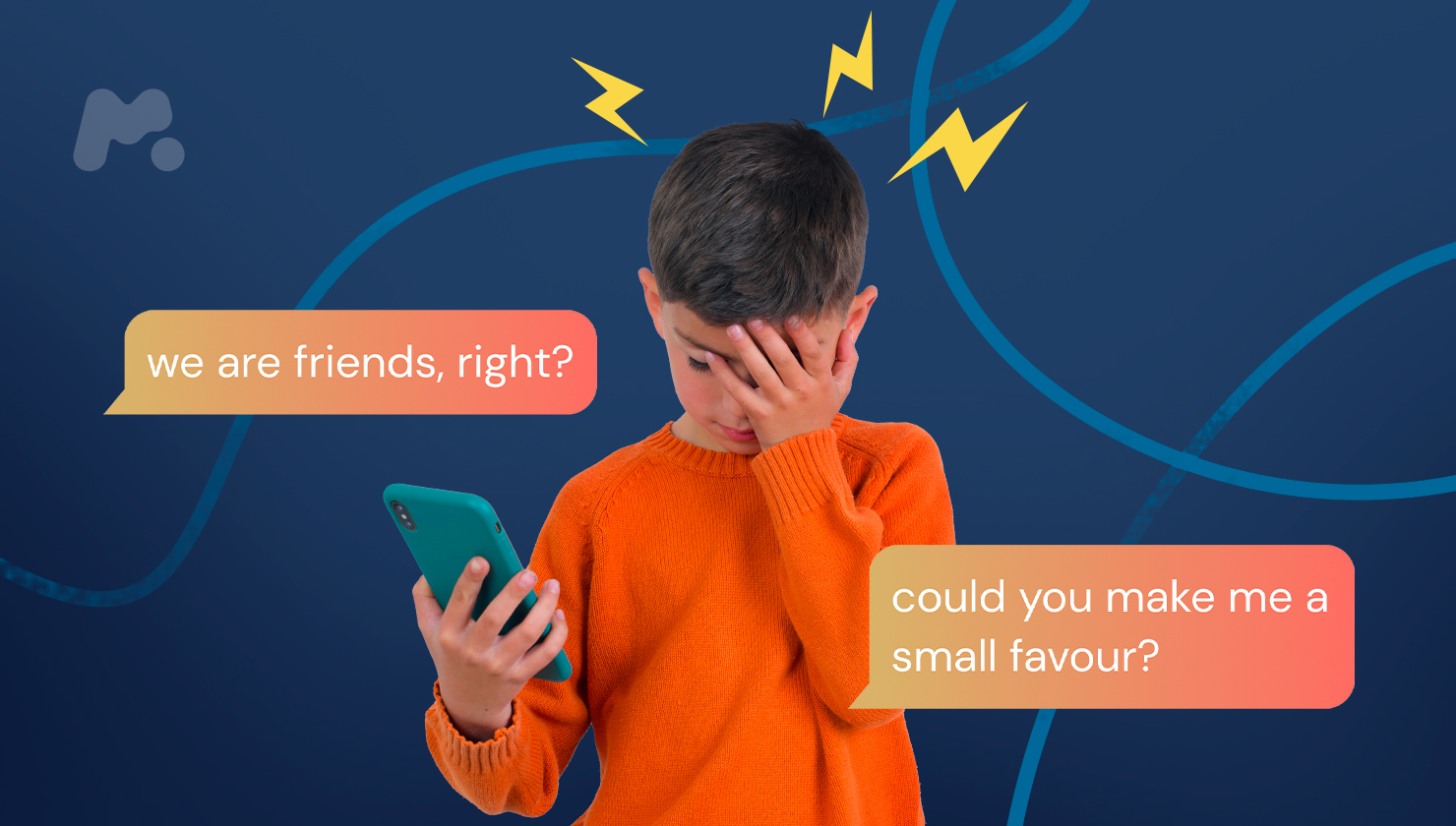

We sometimes hear about child grooming on the TV news but don’t take it seriously enough. Most parents think it would never happen to their kids, and there’s nothing to fear.
Adults are too sure that their children are safe and sound. However, the greatest danger doesn’t come from strangers. It often comes from people children know.
Anyone can be a child groomer, starting from your neighbor and ending up with your child’s babysitter. That’s why it’s important to recognize grooming behavior in sex offenders and prevent children from being harassed.
Table Of Contents
What Is Child Grooming?

Grooming is when an adult tries to establish a trusting relationship with a child to abuse them sexually. It can happen in real life or online. It can be conducted by a stranger or someone a child already knows (close friend, neighbor, or relative).
Most groomers use manipulative behaviors to “befriend” a kid, gain their trust, draw them away from family, and, finally, start abusing them. It’s a long-lasting act of building a connection with a minor that takes effort from a groomer.
It means that once a victim is targeted, a groomer will follow their plan and won’t give it up whatever happens. The earlier parents identify any signs of predator grooming, the greater chances they have to save a child.
Child Grooming in the US: Shocking Statistics
Did you know that there were a reported 656,243 cases of child abuse in the United States in 2019? Here are a few more facts that can convince you to take the problem more seriously:
- The child abuse rate in the United States is highest among Alaska Native and American Indian kids — 15.2 cases per 1,000 victims;
- Around 158,900 of those children are aged 2-5 years old;
- Often, a perpetrator is a close relative of the victim (including parents);
- Neglect is the most common type of child abuse – about 411,969 cases in the country.
How Predators Groom Their Victims: Recognizing the Signs of a Predator
If grooming is so common and is seen frequently, why can’t parents identify a predator before something bad happens?
The thing is, abusers use classic child grooming techniques that have been working for them for years. Specialists denote six stages of grooming that can be characterized as follows:
Stage 1. Targeting the victim. Predators tend to choose vulnerable kids who experience complicated emotional or social conditions or are abandoned by family.
Stage 2. Gaining the victim’s trust. At this stage, groomers take their first steps toward conquering a child’s trust and becoming their best friend. They gather information about a kid to identify their needs and then offer them what they want the most.
Stage 3. Filling the child’s needs. When they finally “befriend” a child or their caregiver, predators work on becoming the most important and noticeable person in their lives. Their tactics include fulfilling a victim’s basic needs and doing something beyond expectations (such as giving money or expensive gifts).
Stage 4. Isolating a child. A groomer needs to deprive the victim of the support of others to reinforce the relationship with a kid. So, they insist on spending time one-on-one as frequently as possible. They will also drive a child away from family by conceiving them that friends and relatives can’t truly understand the victim.
Stage 5. Giving relations the sexual connotation. When trust is gained, groomers start to sexualize their relations with a child. They show explicit images, offer to watch adult movies, and discuss adult-oriented topics. They create situations when they are both naked and, finally, conduct the first abuse.
Stage 6. Controlling the victim. It is the final stage of grooming a child, where a predator obtains total control over a kid’s life. They actively abuse minors and threaten to hurt them if they tell their parents anything.
As you can see, predators use the same pattern to abuse minors. Yet sometimes they can act more directly: “befriend” children online, convince them to share explicit images or videos of themselves, and abuse them on the Internet or in real life.
How to Prevent Child Grooming
The first thing you can do to prevent a child from being abused is to pay attention to the child grooming signs listed earlier. You need to always keep them in mind, as your kid will meet many new adults. These can be neighbors, teachers, coaches, or anyone who will be engaged in your child’s life and development.

Next, you need to establish trusting relationships with your child. Although signs of grooming a teenager can be pretty obvious, you can never know that someone abuses a child or teen. So, make sure your kid tells you everything, including things that might seem insignificant.
Finally, you can take control of your kid’s online activity and monitor it with a parental control app. A monitoring tool, such as mSpy, can give you full insight into what your child is up to online.
As the app allows you to monitor a minor’s calls and text messages, you can stay on top of what’s going on. The GPS location monitoring will show your child’s whereabouts in real time. It means you will know where to look for your kid if they’ve got into trouble.
What’s more, you can capture evidence of online abuse by recording your child’s cell phone screen remotely.
Conclusion
If a child faces a predator in real life, there’s a small chance they understand what’s going on. However, identifying a groomer is more complicated when it comes to online communication.
Predators can pretend to be peers, soulmates, or someone who understands what bothers your child. If they fail once, they can pretend to be someone else and do so until they gain a kid’s trust.
Child molesters can be sophisticated social media users who seek a potential victim. So, it’s good for parents to monitor their children’s smartphone activity with a parental control app, such as mSpy.




Gosh, people need to be more better and not weird.
I now know this for my kids